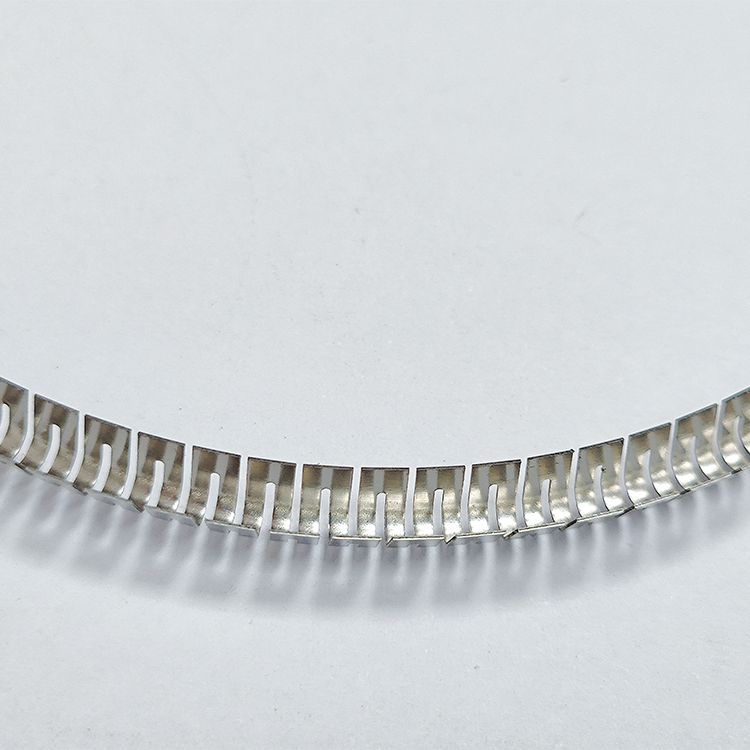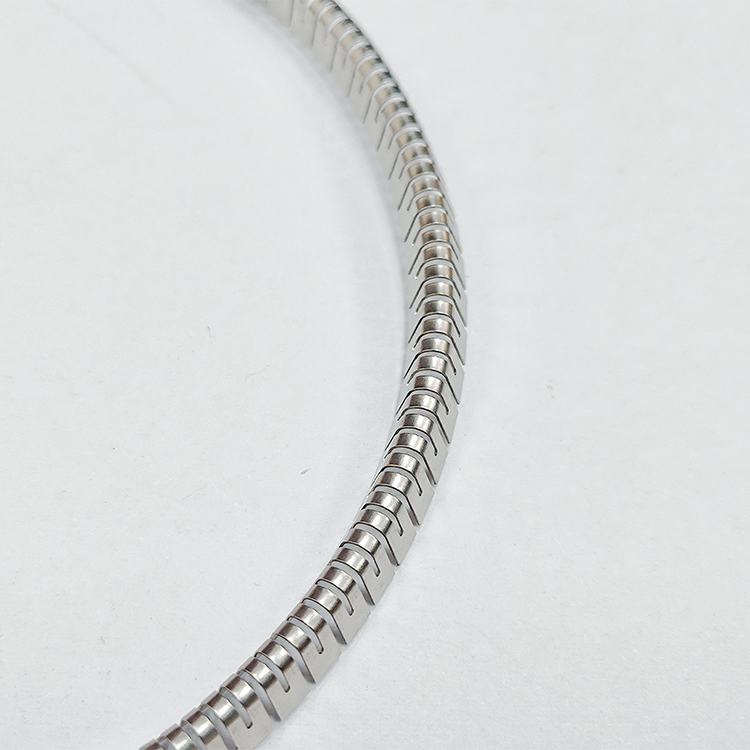Selecting the material for a V-spring is a critical decision that significantly impacts the spring’s performance, durability, and suitability for its intended application.
1.Operating Temperature: The material must be capable of withstanding the operating temperature of the application. For example, Oil Tempered Chrome Vanadium (ASTM A231) and Oil Tempered Chrome Silicon (ASTM A401) are suitable for shock loads and moderately elevated temperatures, with maximum operating temperatures of 425°F and 475°F, respectively.
2.Corrosion Resistance: The material should offer adequate corrosion resistance to prevent premature degradation, especially in environments with corrosive substances. This is crucial for applications where the spring may be exposed to chemicals or moisture.
3.Mechanical Properties: Key mechanical properties such as tensile strength, elasticity, and fatigue resistance are essential. Materials with high tensile strength can withstand heavy loads without deformation, while sufficient elasticity allows for proper spring action. Fatigue resistance ensures the spring can endure repetitive loading cycles without failure.

4.Cost-effectiveness and Availability: Practical considerations like cost-effectiveness and material availability are important. The chosen material should balance the desired properties with the overall cost of production and be readily available in the required quantities to support production schedules.
5.Specialized Materials for Specific Applications: Depending on the application, specialized materials may be required. For instance, Inconel and Elgiloy are used for applications requiring high temperature resistance and corrosion resistance, such as in aerospace and chemical processing industries. Music wire, stainless steel, and other materials offer varying combinations of mechanical properties, corrosion resistance, and thermal characteristics, catering to diverse application requirements.
6.Environmental Considerations: The material should be suitable for the environmental conditions the spring will be exposed to, including humidity, oil, and chemical exposure. This is particularly important for applications in harsh environments.

In summary, the selection of the material for a V-spring involves considering the operating temperature, corrosion resistance, mechanical properties, cost-effectiveness, availability, and environmental conditions. By carefully evaluating these factors, manufacturers can choose the most suitable material to ensure optimal performance, durability, and reliability of the V-spring for its intended application.